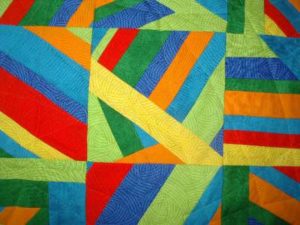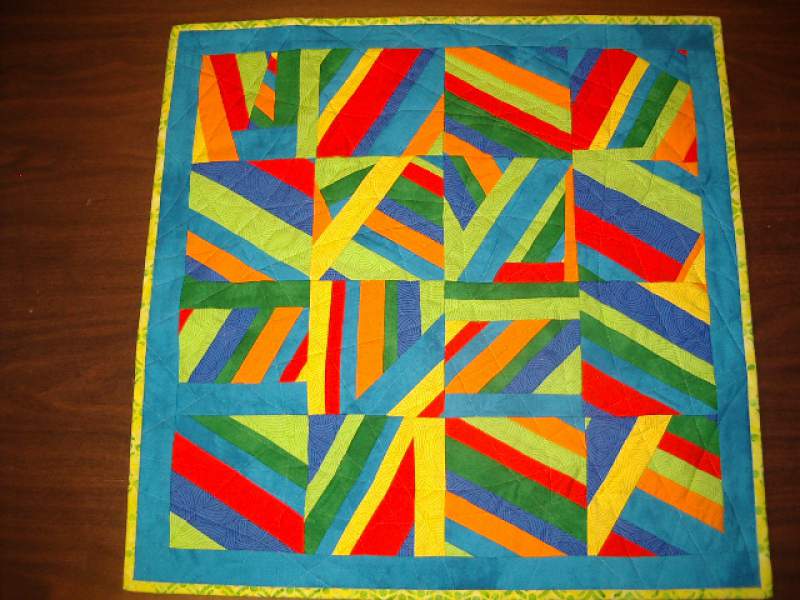When I first started making quilts, I worked very hard to make everything perfect. If I made a mistake, I would rip seams and re-sew. Then one day it occurred to me there was a lot to be gained by looking for all the design and construction possibilities in a project. I still believe in accurate and excellent construction. But when that does not happen it opens the door to an exciting and unexpected challenge.
Here is an example. My original design goal was a large 4-patch square. Each patch would have diagonal parallel strips of fabric running from edge to edge across the square.
I started by cutting strips of various widths and sewing them together on the long edges to make a large rectangular panel. Along the way one of my seams widths was a bit uneven on one end of the strip. As more strips were added, the unevenness was magnified. When I noticed the problem, the beautiful panel of perfect parallel strips had a distinct bend to the left on one edge.
This was clearly a “oops.” There were three choices to correct the problem: abandon the project and start completely over, rip out seams and re-sew, or figure out how to use this mistake to my advantage.
So I took the third choice and experimented. I cut the panel diagonally into 4″ wide strips and then cut the strips into squares. After cutting I had several diagonally striped squares and some triangular and odd shaped scraps. I added additional strips to the triangles and scraps and sewed some of the pieces together, then cut the sewn units into 4″ squares.

This process made the uneven strips almost disappear within the overall complexity of the design. I arranged all of the squares in a pleasing order and added a border.
My original simple 4-patch design turned into an interesting experiment by using my “mistake” in an intuitive way. It was fun too. If you have a question please feel free to contact me.

